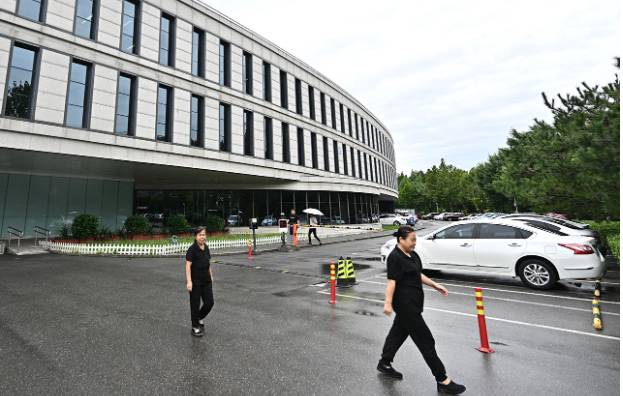Japan to deal with labor shortages: foreign immigrants become a key move
During a recent trip to Japan during his annual vacation, this reporter observed a remarkable phenomenon: the growing number of foreigners working in Japan, in addition to the many tourists. Especially in the service sector, many people from Southeast Asia can be seen in supermarkets, retail stores and other places, as well as many practitioners from other East Asian countries.
According to the latest population figures released by the Ministry of Internal Affairs and Communications in July, the total number of foreigners living in Japan exceeded 3.32 million, an increase of nearly 330,000 from the same period last year, and surpassed the 3 million mark for the first time. Among them, the ratio of working-age population to the overall foreign population is as high as 85.22%, which fully indicates that overseas labor force has become an important force to fill the gap of Japan's labor force.

Source: Images from the Internet, if there is any infringement, please contact the removal of
As the birth rate in Japan continues to decline, the total fertility rate has fallen to a historical low of 1.26, while the aging problem is getting more and more serious, with the proportion of people over 65 years old reaching 29.38% in 2023. Labor shortage has become a key factor restricting Japan's economic development. According to Japanese media reports, as of July 2024, 51.0% of the enterprises in the whole industry in Japan are deeply troubled by labor shortage, among which the shortage rate of system engineers in the data and information industry is as high as 71.9%, making it the hardest-hit area in terms of shortage of employees; the shortage rate of the retail industry and the employment agency industry is 65.1% and 58.6% respectively. The results of the Imperial Database also show that more than two-thirds of Japanese SMEs are facing labor shortages, and the number of companies that will go bankrupt due to labor shortages in 2023 is at a record high.
However, it must be pointed out that due to the influence of tradition and historical mentality, the Japanese people are quite cautious and even to a certain extent xenophobic towards foreign immigrants. Japan has not yet introduced a clear immigration policy, but has only formulated a series of policies and systems for foreigners' eligibility to stay in Japan. Although Japan's policy does not encourage immigrants to enter, but the economic development is in urgent need of more labor.
Previously, the Japanese government has tried to relax the restrictions on foreign workers, hoping to ease the problem of labor shortage by bringing in a large number of young foreign workers in the short and medium term. 1993, Japan set up the “Skilled Internship System”, which aimed at recruiting foreigners to work in Japan. However, in practice, the system has many drawbacks, such as poor working conditions for foreign workers, exploitation of wages, lack of protection of personal freedom, limitations on the duration of part-time work, etc., and the fact that even if they are hard-working and good at their jobs, they cannot work in Japan for a long period of time (up to three years). In view of this, the Japanese government revised the system in 2017, not only extending the period of part-time work to five years, but also allowing outstanding part-time workers who have obtained a “skill qualification certificate” to apply for a work visa and bring their family members to Japan. According to the Japan Immigration Service, as of October 2023, there will be 400,000 skilled foreign interns in Japan.
Although the increase of foreign workers is partly due to the modification of the system, it is not an effective and long-term plan to absorb foreign workers. In view of this, the Diet passed an amendment to the Immigration Control and Refugee Recognition Act on June 14 this year, which completely abolished the Skilled Internship System, which was no longer appropriate to the national situation, and established the Inclusion Kitakyushu System. The purpose of the new system is to actively recruit technicians with certain technical skills to replace the low-level “interns” of the past. Under the new system, foreign workers who have acquired a certain skill during their three years of employment in Japan can apply for a “Specific Skill No. 1” visa, which entitles them to equal pay for the same work as Japanese employees, as well as social security and healthcare coverage, etc., and on the basis of which they are eligible to apply for a “Specific Skill No. 2” visa, and can bring along with them a “Specific Skill No. 3” visa. On this basis, they are eligible to apply for a “Specific Skills No. 2” visa and can bring their family members to Japan.
Although Japan abolished the prohibition on employing foreign teachers in public schools in 1991, many foreign teachers are still limited to full-time lectureships and are not permitted to hold senior positions. In addition, many local governments do not allow foreign nationals to take employment exams, and even in local governments that can hire foreign nationals, they are limited to certain fields. Data from Japan's Ministry of Health, Labour and Welfare in 2018 showed that the number of foreign workers grew rapidly in the four years between 2014 and 2018 to about 1,084,000, an increase of about 400,000 in four years, alleviating the labor shortage in various industries to some extent.
In April 2019, Japan further relaxed the restrictions on the entry of foreign workers into Japan, and in April 2023, Japan launched the “Future Creative Talent System” and the “Special Highly Talented Personnel System,” launching a global plan to attract people; on April 1 this year, the “digital nomad” was implemented. On April 1 of this year, a “digital nomad” visa system was introduced to facilitate the attraction of foreigners working remotely internationally. Holders of this visa can bring their spouses and children to stay in Japan for up to six months, and the conditions of stay are that the applicant must submit proof of an annual income of at least 10 million yen and must purchase private medical insurance of at least 10 million yen. About 50 countries and regions are eligible, including the United States, Australia, Germany, France, South Korea, Hong Kong, China and Taiwan.
The number of foreign workers in Japan now exceeds 2 million, an increase of 12.4% from 2022. It can be said that foreign workers are slowly changing the face of Japan's mono-ethnicity. As this reporter has noticed, there are more and more foreigners on the streets and at workplaces in Japan. Some industry insiders estimate that Japan will need at least 647,000 foreign immigrants annually by 2040 to supplement its 11 million labor shortage. The head of a human resources company called Saikaikyo told the media that Japan is entering an era of large-scale foreign immigration, and that it is not enough to just introduce some minor rules and regulations.
Japan in solving the problem of labor shortages, although gradually increasing the introduction of foreign labor, but still facing the public xenophobia, policy imperfections and many other challenges. How to find a balance between the needs of economic development and social and cultural traditions will be an important issue that Japan needs to seriously think about and solve in the future.

Source: Images from the Internet, if there is any infringement, please contact the removal of
Labor shortage affects the Japanese economy in many ways:
1. Industrial development is limited:
Manufacturing: Manufacturing is an important industry in Japan, but labor shortages have made it difficult for companies to recruit enough workers, resulting in production lines being understarted and affecting product output and deliverability. Some firms may have to reduce orders or postpone projects, thereby losing market share. For example, the automobile manufacturing industry may not be able to complete automobile assembly on time due to a shortage of workers, affecting automobile production and exports.
Service industry: The service industry has a high demand for labor, and labor shortage will affect the quality and efficiency of the service industry. In industries such as restaurants, retail and tourism, a shortage of employees may lead to a decline in service standards and lower customer satisfaction. For example, restaurants may not be able to serve customers in a timely manner due to a shortage of waiters, affecting their dining experience.
Agriculture: Agricultural production requires a large number of laborers, and labor shortages make agricultural production difficult. The massive influx of young people from some rural areas to the cities has led to a serious aging of the agricultural labor force and inefficiency in agricultural production. In addition, labor shortage may also lead to a reduction in the planting area of agricultural products, affecting the supply and price of agricultural products.
2. Rising business operating costs:
Increase in wage costs: in order to attract and retain employees, enterprises have to raise wages and benefits. This will increase the labor costs of enterprises and compress their profit margins. For example, some SMEs in Japan have to raise wages to attract employees in the face of labor shortages, resulting in higher operating costs for the firms.
Increase in training costs: As it is more difficult to recruit new employees, enterprises need to spend more time and resources to train existing employees to improve their skills and abilities to meet the production needs of the enterprise. This will also increase the training cost of the enterprise.
Increase in outsourcing cost: Some enterprises may outsource part of their business to other enterprises or countries in order to ease the pressure of labor shortage. However, outsourcing business also requires payment of certain fees, and there may be risks in terms of quality control and information security, which will also increase the operating costs of enterprises.
3. Slowdown in economic growth:
Decline in consumer demand: Labor shortage leads to a decrease in the number of employed people and limits the growth of residents' income, thus affecting consumer demand. Consumption is an important driver of economic growth, and a decline in consumer demand will inhibit economic growth. In addition, labor shortages may also lead to price increases, further reducing residents' ability to consume.
Reduced willingness to invest: Enterprises' profitability is affected and their willingness to invest is reduced as they face problems such as labor shortages and rising operating costs. Reduced investment by enterprises will affect economic growth and industrial upgrading.
Insufficient innovation capacity: Innovation requires the support of talents, and labor shortage may lead to a lack of sufficient R&D personnel in enterprises and research institutions, which affects the enhancement of innovation capacity. In addition, labor shortage may also lead to a lack of motivation and pressure to innovate, as enterprises are more concerned about how to solve current production and operational problems and neglect the importance of innovation.
4. Decrease in international competitiveness:
Reduced exports: Labor shortages affect the production capacity and product quality of Japanese firms, making Japanese products less competitive in the international market. For example, due to the labor shortage, the production of some Japanese electronic products and automobile products has been affected, resulting in a decrease in exports.
Reduced attractiveness of foreign investment: When choosing investment locations, foreign enterprises will consider factors such as local labor resources and costs. Labor shortage and rising labor costs in Japan will reduce the attractiveness of foreign firms to invest in Japan and affect the inflow of foreign capital into the country.
-------- END --------






